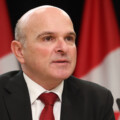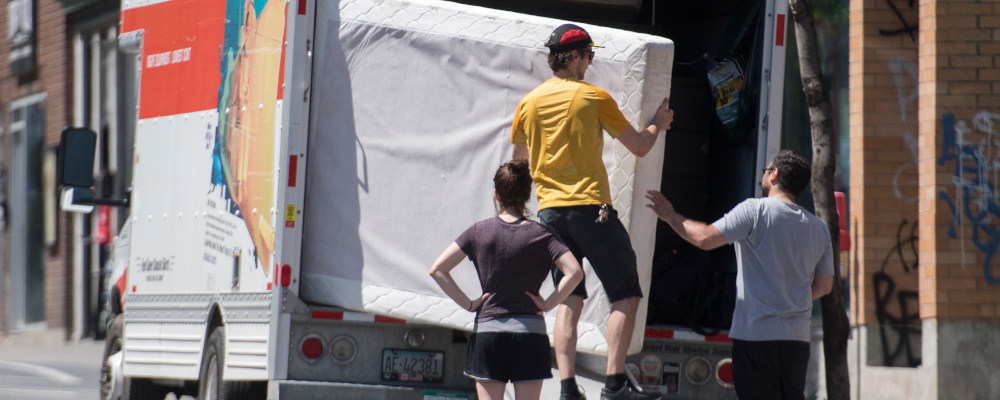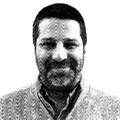In 2009, American journalist Bill Bishop wrote the influential book, The Big Sort, to describe the growing cultural and political bifurcation of American society based on a process of self-selection which, in broad terms, saw educated professionals with progressive political preferences increasingly concentrated in cities and those in non-professional jobs with more conservative politics disproportionately inhabited in rural and peripheral communities.
As he explained:
What’s happened, however, is that ways of life now have a distinct politics and a distinct geography. Feminist synchronized swimmers belong to one political party and live over here, and calf ropers belong to another party and live over there. As people seek out the social settings they prefer—as they choose the group that makes them feel the most comfortable—the nation grows more politically segregated—and the benefit that ought to come with having a variety of opinions is lost to the righteousness that is the special entitlement of homogeneous groups. We all live with the results: balkanized communities whose inhabitants find other Americans to be culturally incomprehensible; a growing intolerance for political differences that has made national consensus impossible; and politics so polarized that Congress is stymied and elections are no longer just contests over policies, but bitter choices between ways of life.
Bishop’s thesis had a powerful influence on academic and popular discussions about the cultural and political life of countries like Canada and the United States. It seemed to offer a conceptually and empirically-rooted explanation for contemporary sociological trends, including, for instance, the growing partisan divide rooted in place.
A few years ago, American public intellectual Will Wilkinson took up the thesis in a must-read, think-tank paper entitled, “The density divide”, in which he elaborated on the “big sort” in the context of the rise of right-wing populism and Donald Trump’s surprise election. His basic argument was that “spatial sorting” based on a mix of ethnicity, cultural preferences, human capital, and even personality traits had driven a “polarizing wedge between dense diverse populations and white sparse populations.”
As Wilkinson elaborated:
By concentrating diversity, human capital, innovation and national economic output in enormous cities, the sorting logic of long-term urbanization has slowly converted the culturally liberalizing power of economic growth into a morally and politically polarizing wedge, driving town and country further apart and feeding the mutual contempt and vitriolic division of negative, affective partisanship.
Although both Bishop and Wilkinson were writing primarily about the United States, there’s an argument that their thesis also broadly applies to Canada. In recent decades, our economy has similarly come to reflect the rise of so-called “superstar cities” and the growing concentration of economic output in a small number of major urban centres.
Consider, for instance, that in the five years prior to the pandemic, Montreal, Toronto, and Vancouver were responsible for two-thirds of the country’s net new jobs. That share surpasses three-quarters if Ottawa-Gatineau, Calgary, and Edmonton are accounted for. In some rural and remote parts of the country, by contrast, communities still have not even fully recovered the jobs that were lost during the 2008-09 global recession.
The economic dominance of these major cities has been matched by their political power. That the Conservative Party has won the national popular vote in successive federal elections but failed to ultimately win due to their lack of seats in the country’s major cities is itself an expression of the density divide.
More than twenty years ago, University of Toronto political scientist David Cameron anticipated the manifestation of “the big sort” in Canadian life:
Without quite realizing it, we Canadians are in the process of building a new country within the old one. The new country is composed of the large cities, especially the great metropolitan centres of Montreal, Toronto and Vancouver; the old country is all the rest. Life in the former bears little resemblance to life in the latter, whether it is a question of cultural expression, crime, the sense of neighbourhood, price and income levels, traffic or the pace of life.
The upshot here is that the prevailing narrative about the interplay between culture, politics, and place in Canada and the United States has tended to reflect a widening divide between the metropole and the hinterland. There’s been a powerful sense that the sensibilities, priorities, and lived experiences across the density divide are diverging at an inexorable pace.
Yet an alternative case has emerged in the past few years that “the big sort” is being undone. New economic and social forces are possibly breaking down the density divide by pushing back against the inexorability of urban agglomeration. The cultural and political consequences of these trends are too difficult to predict at this point. But there’s a strong argument that they could be as significant as the ones that they’re ostensibly replacing.
Let’s start with the data. University of Ottawa economist Mike Moffatt has documented the growing flight of urban professionals from major cities like Toronto to peripheral communities. In 2022, for instance, although Toronto added 138,240 net residents relative to the previous year, it added 159,679 immigrants which means that approximately 78,000 people actually left over the course of the year.
These developments started in about 2015 as a response to high housing prices. City residents, particularly those with young families, have been forced to “drive until they qualify” to purchase homes that can accommodate their needs and expectations.
The pandemic and its effects on workplace arrangements—including the rise of remote work (or at least hybrid work)—have reinforced these trends. Each year since the pandemic began, Toronto has lost population on a net outflow of residents—the most in a generation.
These people are relocating to peripheral communities in the Greater Toronto Area as well as increasingly more broadly across the country. Moffatt has in fact argued that what makes these recent migration trends different than in the past is that new workplace arrangements are enabling individuals and households to relocate outside of the economic region of their employers.

As he set out in a virtual event that I moderated for the Public Policy Forum in March 2023:
Before the pandemic, people were still somewhat constrained by commuting distance. So they might end up in a Brantford or a Woodstock or a Kitchener-Waterloo…The places that people moved out of Toronto to were within about 100 or 200 kilometres. That’s changed during the pandemic…As young families are able to work using home-type arrangements, instead of moving to Brantford, they’re moving to Calgary, Halifax, or Moncton. Over the last year, for instance, Ontario has lost more population to other provinces than it has in any time that we have recorded data. Work-from-home so far seems to be allowing people to still have jobs in Toronto, Montreal, or Vancouver but live in a completely different geography.
His data and analysis resonate with my own experience. We had close friends move from Toronto to Cobourg during the pandemic, for instance, based on the hedged bet that they’ll never have to return to the office on a full-time basis.
It prompts the question: If “the big sort” is indeed being undone, what are its consequences? They’re multi-faceted and fascinating to think about.
One potential consequence concerns basic politics. Keep in mind, based on Toronto’s voting patterns, that there’s a decent probability that those leaving the city for Cobourg or elsewhere are probably more progressive than the median voter in their new communities. The interplay between their political preferences and the politics of their adopted homes is therefore hard to predict.
Do urban progressives export their preferences to their new homes? If so, it could possibly, depending on the scale of migration patterns, change the political character of these more conservative communities. The net result could be to put some Conservative ridings on the periphery of the country’s major cities into electoral play.
Or does the opposite happen: do these communities come to imprint their own cultures and politics on their new inhabitants? If so, it could, in theory, deagglomerate the political power of our major cities and strengthen the relative voice of faster-growing mid-sized and peripheral communities.
I asked Moffatt to speculate on these political implications at our Public Policy Forum event. Here’s his response:
Are the people who are coming into those areas changing the politics of those areas or are those areas changing the politics of the people who move in? Is Tillsonburg becoming more like Toronto or are the Torontonians who will move to Tillsonburg becoming more like the locals?
I suspect it’s somewhere in between. But I actually do think it’s probably positive overall for society because I think it can develop a better understanding [across the divide]. There may be less polarization in a world in which you could live in the Tillsonburg, but work in Toronto and you kind of have one foot in both worlds. You talk to your neighbour who might work at the CAMI plant or whatever…I think it can foster more understanding. So I’m cautiously optimistic.
I put the same question to leading pollster Darrell Bricker in a recent episode of Hub Dialogues. His response was broadly similar:
That’s a really interesting question. If you look at the past as prologue, what tends to happen is that the downtown sensibilities tend to find a way to move out. We were talking about Mississauga before. Mississauga never used to vote Liberal. They now vote Liberal pretty overwhelmingly, or NDP where Jagmeet Singh is from. That never was the case before.
Yes, there’s going to be a push-out into the newer suburbs in which that’s the case, but then you see what also happens is when people leave downtown and they move to a place like say further car-commuting suburbs, what tends to happen is the people move there. What we’ve seen is that, actually, the place changes them. They develop the same values as the people who are living around them. This even is new Canadians who do the same kind of thing, which is what makes the 905, we’ll just use Toronto as the example, so volatile. They can vote one way or the other. It’s really in flux.
Downtown is always going to be orange or red in most major cities, but those commuting suburbs, they’re the ones that tend to flip.
Setting aside the particularities of feminist synchronized swimmers, rural calf ropers, or Tillsonburg CAMI workers, the main point here is that the neat and tidy geographic segregation reflected in “the big sort” seems to be breaking down.
The cultural and political consequences may be hard to judge at this point. But the presumptive takeaway is far from nothing—in fact, quite the opposite. If Bishop, Wilkinson, and Cameron are right and “the big sort” has been a defining feature of the past few decades, then its undoing ought to have an oversized influence over the coming years.
Recommended for You

The Weekly Wrap: Reject racialism. Embrace meritocracy

The Week in Polling: Liberals and NDP tied for first time since 2015, Canadians twice as likely to feel worse off financially than better, and most Ukrainians want the war to end as soon as possible

Stephen Staley: Escaping the media echosystem

Ben Eisen and Jake Fuss: Somebody tell Justin Trudeau and Doug Ford that the Santa Claus model of tax policy doesn’t work




